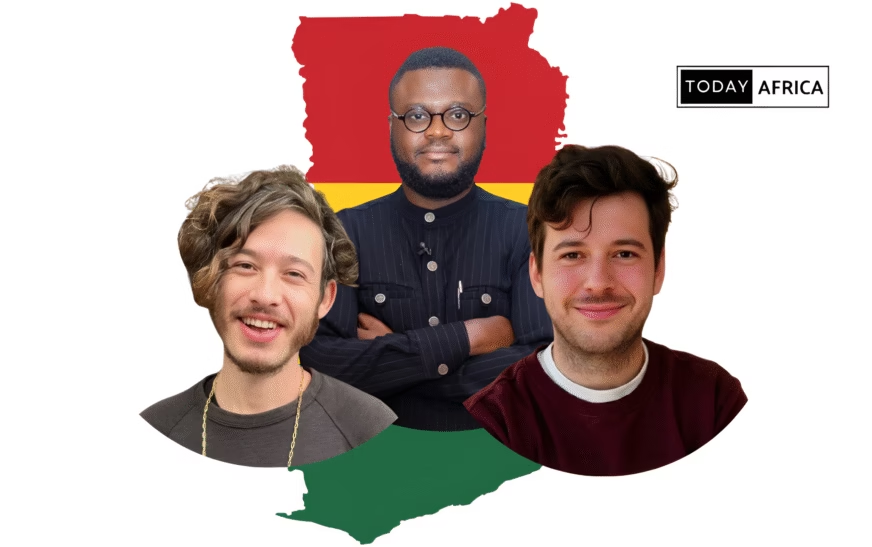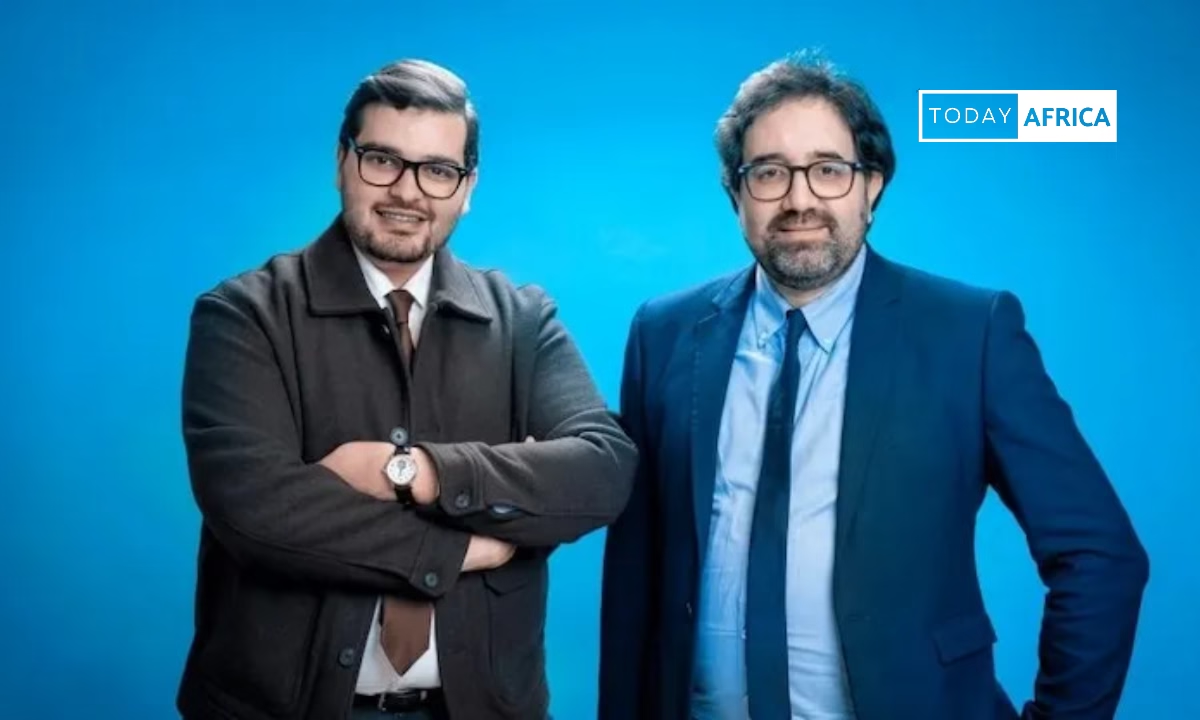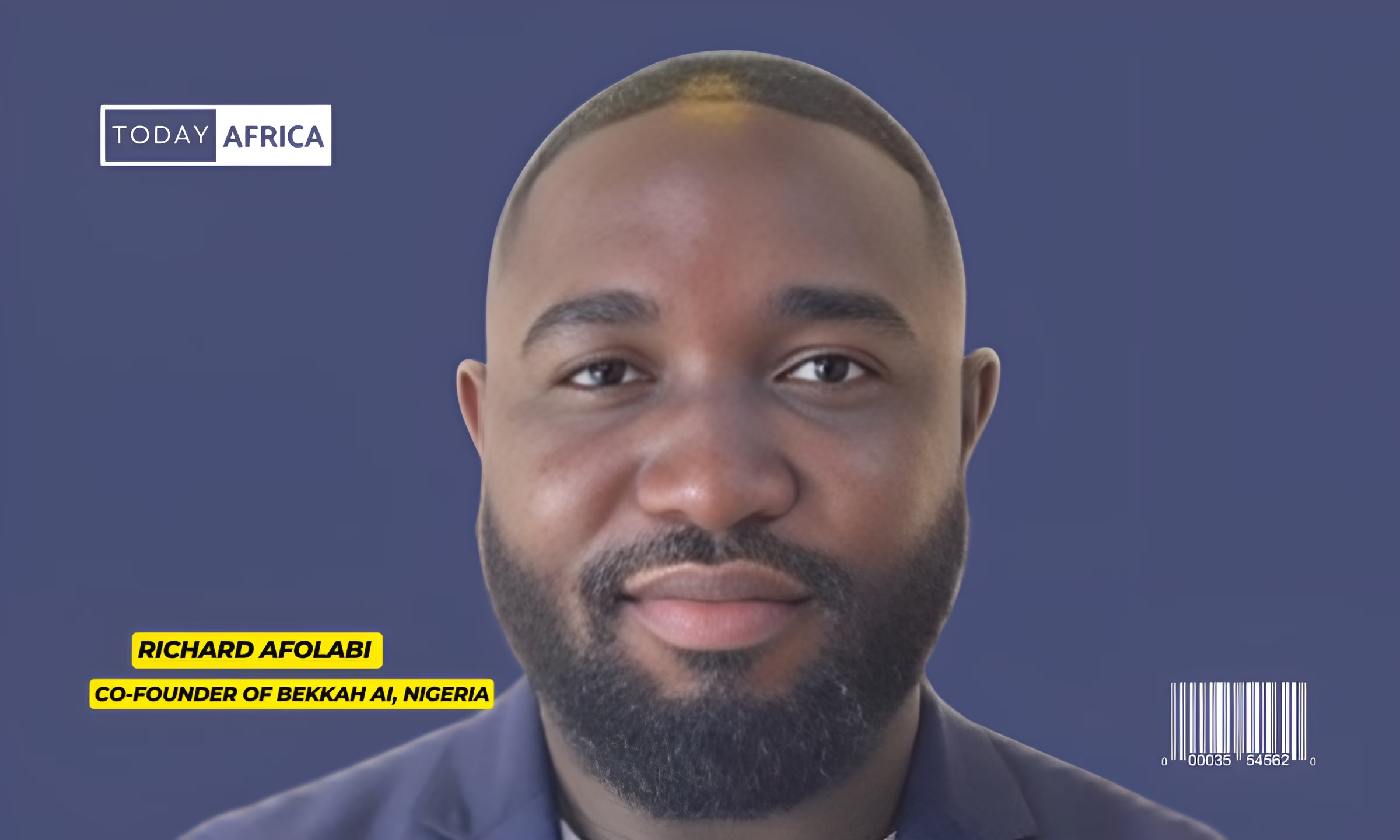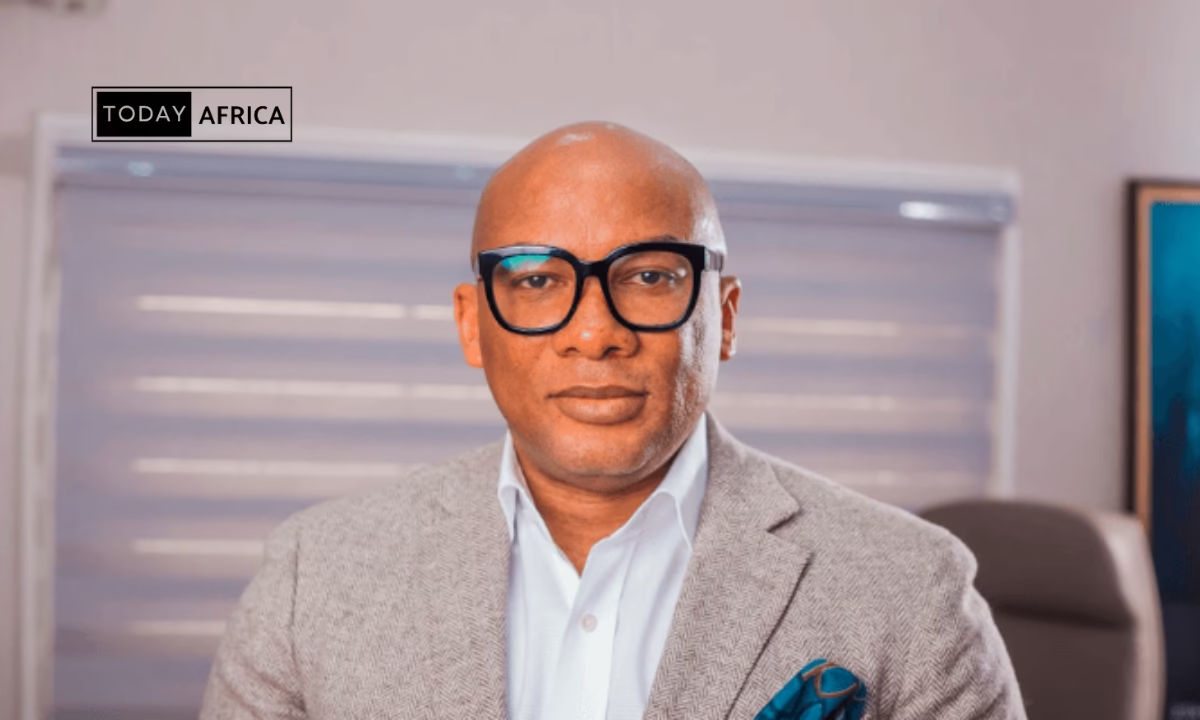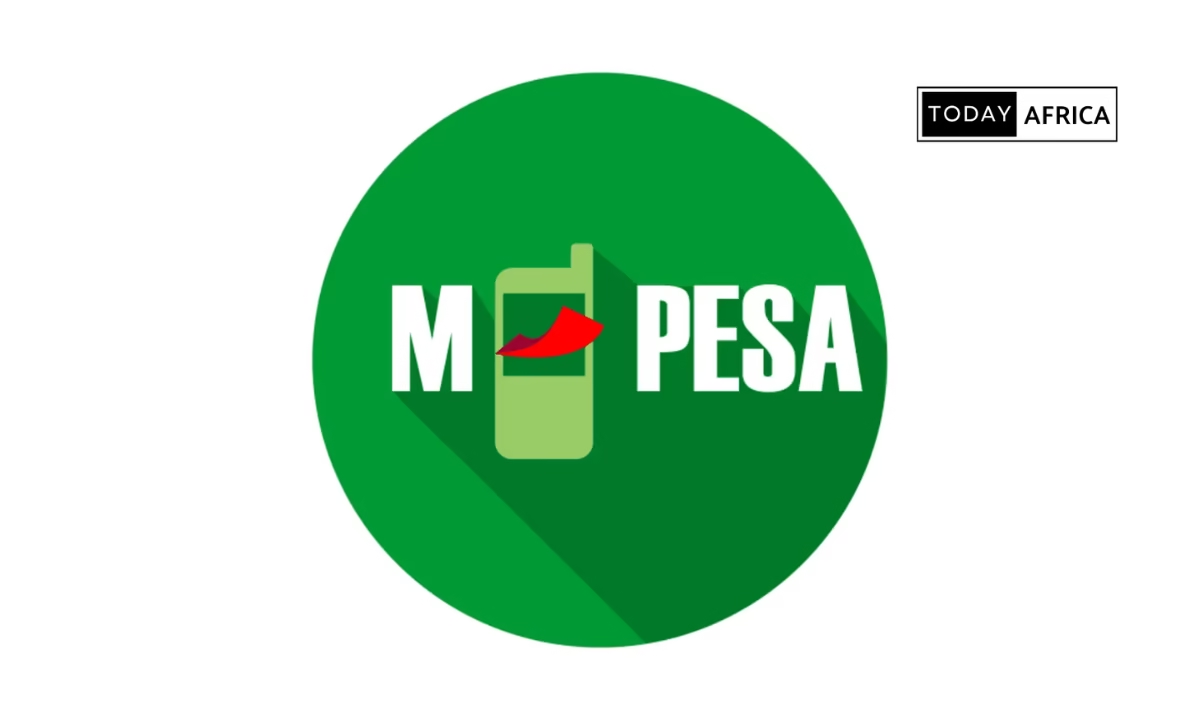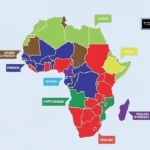It started with a question that felt almost naive. Why is it so hard to get the medicines people need?
Not rare cancer drugs or experimental therapies. Just everyday prescriptions. Blood pressure meds. Insulin. Antibiotics. The things pharmacies should never run out of, yet often do.
Gregory Rockson saw that gap everywhere. Patients shopping around different pharmacies.
Pharmacists guessing inventory and tying up cash in stock that might expire. Hospitals waiting weeks. It wasn’t a dramatic crisis, just a slow, grinding problem baked into daily life.
mPharma grew out of that discomfort. Not as a flashy healthtech startup, but as an attempt to make medicine predictable, affordable, and actually available. Over the past decade, the company has been quietly stitching together pharmacies, doctors, manufacturers, and insurers.
This inside mPharma’s journey traces the founding story, their funding journey, strategic moves, societal impact, challenges, and lessons learned.
Disclaimer: Based on publicly available information as of November 2025 from Forbes, Quartz, TechCrunch, Managing Ghana, Business Insider, Realistic Optimist and mPharma’s own publications.
Founding story of mPharma
mPharma began in Accra in June 2013, when Ghanaian entrepreneurs Gregory Rockson and Daniel Shoukimas, along with U.S. technologist James Finucane, set out to “streamline the pharmaceutical supply chain” in Africa.
The idea grew from Rockson and Shoukimas’s experiences in Ghanaic healthcare: they saw hospitals and pharmacies wasting money on expired or costly medicines, while patients often went without affordable drugs.
Early on, mPharma’s mission was clear: fix the fragmented, “push”-based drug supply chain and connect patients, pharmacies and hospitals with transparent, data-driven ordering.
The founders envisioned a system that would aggregate demand and purchasing power for thousands of independent “mom‑and‑pop” pharmacies (the vast majority in most African markets) and use technology to reduce stockouts and prices.
In practical terms, Rockson explains, the company would effectively manage a pharmacy’s inventory.
From 2013, mPharma developed software (later branded as “Bloom”) and financing programs, enabling pharmacies to bulk-buy medicine and maintain a steady supply of shelves.
Greg Rockson has often analogized this as creating a “pharmacy monolith” out of a fragmented market – if “CVS, QuintilesIMS, and McKesson had a baby, it would be mPharma”.
By acting as a vendor-managed inventory service, mPharma could negotiate better supplier prices and pass the savings on to patients.
For example, as early media coverage noted, mPharma provided inventory loans and demand‑forecasting tools to outlets in Ghana, Nigeria, Zambia and Zimbabwe, lowering drug costs by up to 30% in some cases.
From the outset, the company’s core promise was that “if mom-and-pop pharmacies can better manage their inventory,” Rockson says, “we can serve more patients and bring down drug costs”.
In the first year after its 2013 launch, mPharma piloted these ideas. The team worked with private hospital pharmacies and local clinics, for instance, partnering with Accra’s University of Ghana Hospital, to test its e-prescription and inventory tools.
Their earliest prototype even experimented with doctors sending SMS prescriptions to pharmacies, but soon mPharma developed a tablet‑based system (Bloom) so pharmacists could access real-time drug pricing and patient history.
During this phase, the focus was on B2B: helping small pharmacies keep certain medicines in stock, financing their purchases, and giving them data they’d never had.
Early on, they also secured seed backing from Silicon Valley investor Social Capital, which believed in the vision of an “Africa-scale” pharmacy network.
Key milestones
By late 2017, mPharma’s network had grown from a handful of outlets in Ghana to roughly 70 pharmacies across West and Southern Africa.
At that point, it was still primarily a software-and-logistics company: marketing itself as “managing prescription drug inventory for pharmacies and their suppliers”.
Even so, the social impact was already notable. In its first few years, mPharma estimated that hundreds of thousands of patients benefited from lower prices. (One report noted “more than 20,000 patients each month” were buying through mPharma‑partner pharmacies by 2017.)
Media acclaim and partnerships soon bolstered its profile.
For example, mPharma won Skoll Foundation recognition in 2019 for social entrepreneurship and expanded pilot programs: working with Ghana’s Red Cross to open new community pharmacies, and helping the Ministry of Health improve rural supply chains.
By late 2019, it was also trialing its first patient‑facing offerings, most notably under the brand Mutti, a monthly subscription plan for chronic disease medications, and experimenting with nurse‑staffed telemedicine at its pharmacies.
By 2020, mPharma’s footprint had extended beyond Ghana into multiple African markets.
It had started projects in Nigeria, Kenya and Zambia, and even signed a contract to rebuild Gabon’s national drug supply network. The company’s self‑description shifted from “inventory software” toward “a full healthcare services network.”
Founders summarized it this way: mPharma would “transform community pharmacies into primary care centers,” ensuring “reliable and safe access to medicines” for underserved patients.
This ambitious vision, born in Ghana in 2013, was now moving outwards, setting the stage for scale and broad impact across the continent.
Read Also: Inside InstaDeep’s Journey: From Two Laptops in Tataouine to a $682M Acquisition
Funding history and investors
mPharma’s aggressive expansion was fueled by a steady stream of venture capital and development finance. Its first backing came from Silicon Valley.
Seed funding
In early 2016, the company raised roughly $5 million in seed funding led by Chamath Palihapitiya’s Social Capital (with participation from Ghana’s Singularity Investments). This seed round helped the founders build their software platform and pilot more pharmacies in Ghana. A key early partner in this period was Golden Palm Investments, a Ghanaian investment firm, which also backed mPharma’s 2017 Series A round.
Series A
In November 2017, mPharma announced a $6.6M Series A. The round was led by Shravin Mittal (son of Airtel’s Bharti Mittal) through his firm Unbound, with Social Capital and Golden Palm reinvesting and new funds like 4DX Ventures joining.
Notably, veteran tech investor Jim Breyer also joined as an observer and investor at that stage. The Series A capital was earmarked for geographic expansion and building scale.
By CEO Rockson’s account, the investment accelerated onboarding new pharmacies: “2017 has been tremendous growth for us… We enter 2018, our focus is on scaling operations and building economies of scale in partnership with providers”.
In other words, mPharma used the funds to grow its pharmacy network across Nigeria and Zambia (and even test the Zimbabwe market), to deepen relationships with African health providers (e.g. private hospitals, NGOs), and to improve its tech platform (processing prescription data in real time).

Series B
Two years later, in late 2019, mPharma closed a Series B for roughly $9 – 10M. (Public filings reported $9.73M.)
This round attracted existing supporters like 4DX, Social Capital and Golden Palm, as well as new backers; by then, investor lists also included firms like Oak HC/FT, Quona and various impact funds (though many preferred not to be named).
Crunchbase estimates that by this point, mPharma’s total funding was about $21M. The Series B money financed a key strategic move: acquisition of Kenya’s Haltons Pharmacy chain (17 locations) for about $5Mc, marking mPharma’s entry into East Africa.
It also supported pilot programs with governments and large healthcare companies (for example, a contract to finance insulin at Ghanaian hospitals, and a partnership with Ghana’s National Health Insurance to subsidize chronic disease drugs).
Series C
In mid-2020, amidst the COVID-19 pandemic, mPharma landed a major Series C of $17M, led by the UK’s CDC Group (now British International Investment). CDC’s investment signaled confidence in mPharma’s pan-African strategy.
Other investors in the round included pharmaceutical industry luminaries like Dr. Daniel Vasella (former Novartis CEO) and Jim Breyer, reflecting the global interest in Africa’s drug markets.
The Series C capital was explicitly used to boost mPharma’s technology backbone and inventory infrastructure: Rockson told media they would “scale up” their QualityRx franchise network and vendor-managed inventory services across Ghana, Nigeria, Kenya and Zambia.
It also supported development of patient‑facing products; in late 2021, mPharma began pilot programs for Mutti Doctor telemedicine and a hospital-oriented e-prescription service.
Series D
The largest round came in early 2022. In January, mPharma raised a $35M Series D (approximately $30M equity plus $5M debt from Citibank).
This round was led by a syndicate including JAM Fund (Tinder co-founder’s VC) and Unbound (Shravin Mittal), with Lux Capital, Northstar Ventures, Novastar and TO Ventures among the co-investors.
The new funding was targeted at building engineering capacity (Rockson said they would “triple” their tech team) and data infrastructure to serve pharmacies online.
It also financed rapid network growth: mPharma set out to build 100 telehealth-equipped Mutti pharmacies in six months and to increase its connected outlets tenfold over three years (from ~200 to 2,000).
November 2025
In November 2025, mPharma secured another round, this time labeled a strategic growth investment.
British International Investment (CDC’s successor) partnered with Growth Investment Partners Ghana (a BII-backed fund) to inject new capital, reportedly to finance expansion into Francophone West Africa.
The amount wasn’t disclosed, but its timing underscored the company’s evolution: with founder Rockson transitioning to chairman and a new CEO in place, mPharma had proven its model in Anglophone markets and now aimed to extend into Benin and Togo.
Notable investors
Across these rounds, notable investors have included:
- Silicon Valley stalwarts (Social Capital and Breyer Capital)
- African impact funds (Golden Palm, 4DX, Oak HC/FT)
- Development finance institutions (CDC/BII, British International Investment).
By 2022, mPharma had raised over $65M in equity (not counting debt), and by November 2025, total funding was cited at roughly $90M.
Each infusion enabled a new phase: from building the core inventory‐management platform, to expanding the pharmacy network and product lines, to eventually creating an integrated healthcare franchise model.
Investors were drawn by the promise of scale (a unified supply chain across fragmented markets) and social impact (greater access to medicines), and the funding pace greatly accelerated mPharma’s roll-out across the continent.
Read Also: Inside VIEBEG Medical’s Journey: Using Data to Transform Medical Supply Chains
Strategies fueling the growth of mPharma
mPharma’s rapid scaling rested on several interlocking strategic pillars.
1. Centralized procurement and inventory management
By aggregating orders across its network of pharmacies, mPharma secured bulk purchase discounts and provided vendor-managed inventory (VMI) services to its partners.
mPharma often buys drugs in advance and holds stock for its pharmacies, then replenishes each outlet as needed. As Rockson describes, “we fully own 25% of them, and the rest are franchised via our QualityRx program…we make money when they sell medicine”.
This arrangement aligns incentives: pharmacies always have key medicines on hand, and mPharma earns a share of sales while gaining detailed demand data.
The Bloom software system underpins this: pharmacists input prescriptions and inventory updates on tablets, and mPharma’s cloud platform uses that data to forecast demand, track expiry dates, and set optimal stock levels.
The result is a data-driven, standardized supply chain in markets that previously relied on opaque, fragmented distribution.
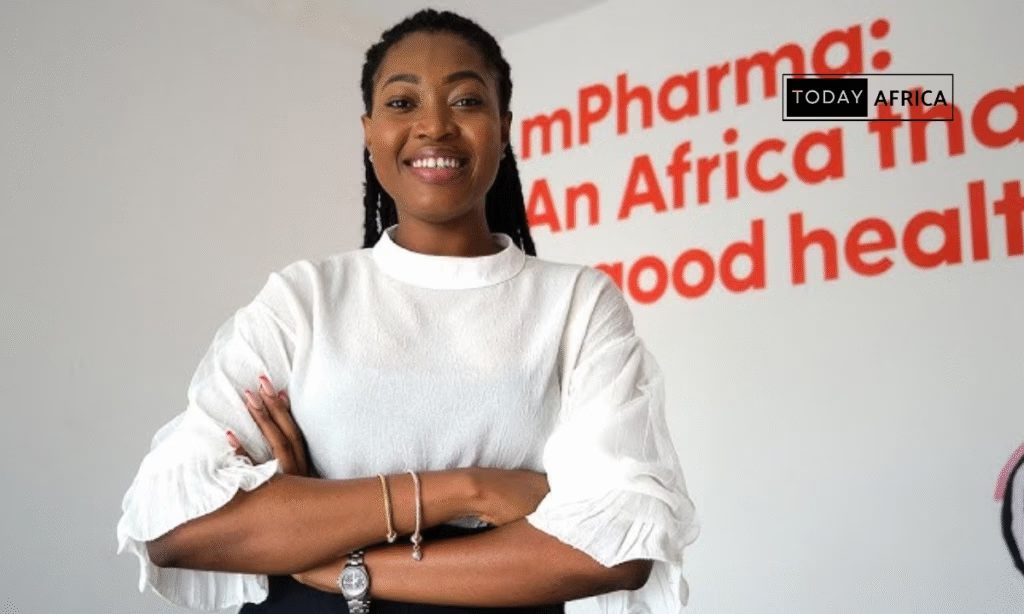
2. Affordable chronic care via subscription and branding
Under the Mutti brand (meaning “mother”), mPharma launched a subscription model for patients with long-term conditions.
Patients prepay a monthly fee and receive discounts on their medications and access to basic diagnostics or telehealth consultations. This buy-now-pay-later model lowered up-front costs for poor patients.
For example, mPharma’s partnership with Ghana’s Absa Bank lets customers obtain Mutti+ health memberships – greatly easing the cost of hypertension and diabetes drugs.
Similarly, the company worked with Novartis and Roche on patient support programs (e.g. discounted cancer meds) built around Mutti membership.
By converting pharmacies into “mini-clinics” with their own patient roster, mPharma aimed to lock in loyal customers who would refill through its network.
3. Integrated primary care
Third, mPharma expanded its offering from pure distribution into integrated primary care. In late 2021, it rolled out Mutti Doctor, a telemedicine platform embedded in pharmacies.
Each Mutti outlet is staffed by a nurse and equipped with a digital diagnostic kit (camera, stethoscope, etc.). Patients can walk into a franchised pharmacy and consult a remote doctor over video.
This transforms the role of the pharmacy: “the pharmacy of the future…is one built around longitudinal care, not episodic care,” Rockson said.
Mutti Doctor diagnoses simple conditions (like infections or hypertension), writes prescriptions electronically, and seamlessly refers patients for follow-up.
4. Pricing and operations
Beyond services, mPharma also standardized pricing and operations. Rather than each pharmacy setting its own markup, most Mutti outlets use a fixed price list negotiated by mPharma (similar to franchise menu pricing).
This price transparency builds trust with patients and prevents under‑the‑counter markups. Pharmacies also adopt mPharma’s branding and inventory practices; they must use the Bloom system and join a shared “Mutti Online” portal, where members can order refills and subscribe to drugs.
5. Strategic partnerships
mPharma collaborated closely with governments, insurers and large health organizations. It helped Ghana’s health ministry digitize drug tracking and even rebuilt Gabon’s national supply chain for 5 billion CFA.
It signed distribution deals with pharmaceutical giants like Pfizer and AstraZeneca to roll out chronic disease medicines (often under patient support or insurance schemes) in Nigeria and Ghana.
And it also allied with NGOs (e.g. the Ghana Red Cross) to open low-cost clinics. Through these alliances, mPharma gained credibility, bulk buying channels, and access to rural customers who had previously been unreachable.
6. M&A and franchising
Its QualityRx model allowed both outright purchases and management contracts. mPharma bought Kenya’s Haltons pharmacy chain (17 stores) in 2019, and took a 55% stake in Uganda’s Vine Pharmacy in 2022.
In 2022, it acquired a majority of Nigeria’s HealthPlus (one of West Africa’s largest pharmacy chains). After the acquisition, mPharma refurbished these stores into Mutti outlets, rolled out its inventory software, and trained staff.
Additionally, under the QualityRx program, mPharma does not need to own an outlet 100%; it often operates clinics on behalf of local owners under a revenue‑share contract.
This hybrid franchise-and-joint-venture approach let mPharma scale much faster than if it built pharmacies from scratch.
Read Also: Inside Twiga Foods’ Journey: From Rural Farms to Cities
Competition in the healthtech and pharma ecosystem
mPharma operates in a fiercely competitive and fragmented environment. Local competitors range from established retail chains to nimbler startups.
In West Africa, the leading pharmacy chains, HealthPlus, MedPlus and Goodlife in Nigeria; Haltons and Emzor’s Lifestores in Ghana, have built recognizability through dozens of outlets.
For example, Nigeria’s HealthPlus alone has over 60 stores, and in 2022, mPharma acquired a majority stake in it to strengthen its Nigerian footprint.
These incumbents are adopting some of mPharma’s tactics: HealthPlus launched its own online pharmacy and telemedicine platform in 2023, and MedPlus has a nationwide e‑commerce portal.
In East Africa, players like Kenya’s Goodlife Pharmacy and Northstar (which distributes multinationals) also overlap in distribution.
Beyond pharmacy chains
Beyond pharmacy chains, a new wave of digital health startups is emerging. E‑pharmacy platforms such as Kenya’s MyDawa and Nigeria’s Remedial Health and DrugStoc are raising capital to serve customers directly online.
Many of these younger firms focus on the last-mile delivery of medicines or on B2B supply for clinics, rather than the franchise model. In Nigeria, for instance, Remedial Health has built a mobile app that helps neighborhood patent medicine vendors (PPMVs) manage stock and patient records.
While mPharma still primarily serves pharmacies, it now faces pressure from these e-commerce entrants, especially as regulators open online channels.
Indeed, major chains and startups alike are vying to be the go-to digital pharmacy; Quartz notes that in 2022, “HealthPlus, MedPlus, and Nett Pharmacy, the Nigerian chains, were catching up by launching their own websites”.
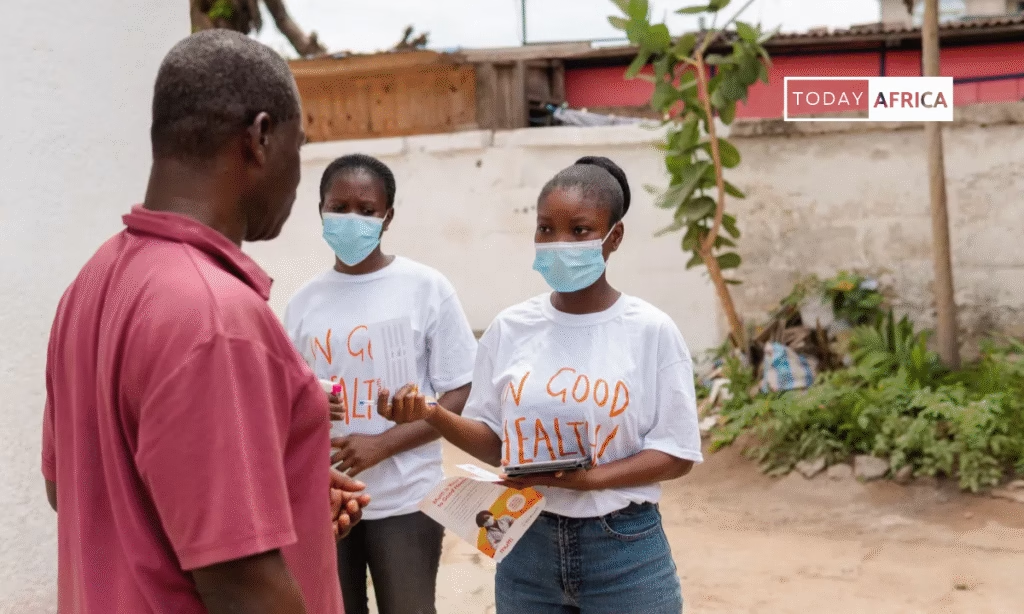
Competitors outside Africa
Internationally, mPharma’s business model is distinct from anything in the U.S. or Europe. Companies like Capsule or Walgreens have multi-billion-dollar markets, unified regulation and mostly insured patients, conditions that simply don’t exist in most of Africa.
In contrast, mPharma’s footprint spans dozens of countries with different rules, minimal health insurance, and a preponderance of small distributors.
On one hand, that fragmented landscape was mPharma’s opportunity (over 90% of African pharmacies are independent). On the other hand, it faces barriers that global peers have never seen.
Counterfeit drugs are endemic, and regulatory oversight is often weak, forcing mPharma to invest heavily in supply-chain quality control. Most Africans pay out-of-pocket for medications, at times under $2 a day, so profit margins are razor-thin.
Generic drug use is widespread but many consumers remain suspicious of non-brand medicines, meaning mPharma must spend effort on patient education and quality assurance.
Independent pharmacists themselves can be conservative: as Rockson admits, convincing a traditional owner to join a new franchise model requires seeing proven results first.
Regulatory complexity
Ghana and Nigeria only recently introduced dedicated online pharmacy regulations. Other markets are still drafting rules for telemedicine and e-prescriptions.
This patchwork makes expansion slow: mPharma must tailor its approach (import licenses, pharmacist licensing rules, insurance contracts) country by country.
As Techmoonshot observes, moving into Francophone West Africa now “means navigating entirely different supply chain ecosystems” and tighter pharmacy ownership laws.
While global analogies are often drawn, mPharma’s situation is unique. It competes on one side with big retail pharmacies and tech startups, and on the other with a “shadow” informal supply network (thousands of small drug dealers and local wholesalers).
Unlike GoodRx (which simply lists drug prices online) or CivicaRx (U.S. non-profit generics), mPharma controls inventory and provides care services in a way tailored to African realities.
Its challenge is balancing tech-forward solutions with on-the-ground constraints: it must work within often lax regulations, low consumer income, and fierce price competition from local distributors.
Yet by forging government partnerships and proving its model with pilot pharmacies, mPharma has built significant moats, even if the competitive landscape remains tough and evolving.
Read Also: Inside Wave’s Journey: Francophone Africa’s First Unicorn
Impact of mPharma on society
mPharma’s activities have had tangible social and economic effects on African healthcare. By 2022 the company reported serving roughly two million patients across Ghana, Nigeria, Kenya, Zambia and Zimbabwe.
Its pharmacy network has grown from a few dozen outlets at launch to hundreds; Media reports noted over 200 Mutti pharmacies by 2022 and plans to expand tenfold. Through these outlets, everyday consumers now see transparent pricing for medicines.
For example, mPharma negotiates set drug prices across its network and posts those prices openly, breaking the old norm of opaque markups. It has directly reduced out-of-pocket costs: mPharma claims “more than 400,000 patients have saved money on pharmacy bills” thanks to its programs.
Economic value upstream
By pooling procurement, it creates demand predictability for international drug manufacturers and encourages them to register products in African markets.
For instance, the Salient Advisory report notes that mPharma’s scale, and that of others, has led companies like Pfizer, AstraZeneca and Roche to supply African markets more consistently.
mPharma’s own data infrastructure allows pharmacists and hospitals to track usage and reduce wastage; its Bloom platform automatically flags near-expiry batches and avoids overstocking.
This efficiency improvement, while intangible, strengthens the local pharmaceutical ecosystem.
Employment and skills
mPharma has trained or created jobs for hundreds of pharmacists and technicians.
It directly hired dozens of pharmacists and recruited over 100 engineers for its tech stack. In rural or underserved areas where mPharma opened pharmacies, it has often become a major private healthcare employer.
Their “Mutti community” program involves local nurses and health workers conducting health education and free screenings (illustrated below), expanding basic care coverage.
mPharma’s interventions reduce price volatility
A study cited by management estimated that patients in its network pay 30–60% less for the same medications than outside.
Economically, this frees up income for households (critical in countries where medicine often competes with food in the budget). Its data also informs policy: aggregated reports on drug usage have aided government health ministries in procurement planning.
In Gabon, the government even hired mPharma to digitize and optimize its public pharmacy distribution, an unprecedented level of public–private integration that had the potential to streamline access for the entire country.
Health equity
mPharma puts transparent drug pricing and reliable supply within reach of ordinary Africans who were previously underserved. It leverages community pharmacies, one of the most accessible points of care, to deliver preventive and primary care services beyond just selling pills.
By lowering medication costs and improving supply-chain integrity, mPharma helps bridge gaps in Africa’s fragmented health systems.
At scale, this could shift long-term health outcomes: patients who can stick to their treatment regimens are less likely to suffer preventable complications, reducing the burden of disease and healthcare costs continent-wide.
mPharma’s story shows how a market-driven approach to medicine can generate social returns: as the CEO put it in Nigeria, “we continue to transform community pharmacies into primary care centers to provide affordable and accessible healthcare to all”.
That mission, once a regional startup vision, is now touching millions of lives across Africa.
Read Also: Inside Sendy’s Journey: The Startup that Tried to Rewrite African Logistics
Challenges mPharma faced
Despite its successes, mPharma’s journey has not been smooth.
1. Regulatory hurdles
African health regulations are often outdated or fragmented; for years, many countries had no legal framework for telemedicine or online pharmacies. As a result, mPharma’s push into telehealth (Mutti Doctor) and e-pharmacy often meant navigating unclear rules.
For example, formal pharmacist licensing laws in Francophone countries differ sharply from Anglophone norms, complicating the rollout of pharmacies outside Ghana and Nigeria.
Even within countries, policies change: Ghana’s 2021 e-pharmacy law and Nigeria’s 2022 Online Pharmacy Regulations forced mPharma to constantly adapt its compliance.
2. Establishing quality control
Counterfeit medicines account for up to 30% of the African drug supply in some studies. mPharma had to rigorously vet suppliers (often in India or Europe) to ensure genuine products, a costly process, but necessary for its safety promise.
Operationally, mPharma contended with thin margins and financing gaps. Many African pharmacies operate on razor-thin profits; likewise, patients have limited ability to pay.
Rockson himself notes that in countries where “out-of-pocket is the predominant form of healthcare financing,” there is a ceiling on how much pharmacies can sell.
This means mPharma’s unit economics are fragile. Launching a new Mutti pharmacy costs money (inventory, tech hardware, nurse), while revenues per customer are modest.
When economic growth slowed continent-wide around 2022–23, mPharma took a hit. In fact, the company announced layoffs of 150 staff in 2023 as broader healthtech funding froze.
These staffing cuts illustrate the difficulty of scaling physical clinics in low-income markets: it is expensive to staff and stock rural or low-revenue locations, and not all centers quickly break even.
3. Supply chain
Events like the COVID-19 pandemic and global shipping bottlenecks made drug imports irregular. Distributors sometimes overstocked in good times or faced sudden shortages.
mPharma had to dynamically finance much of its own inventory; this inventory financing requirement grew in size as the network grew, tying up capital and risking exposure if demand projections missed the mark.
Technological adoption was no guarantee either. Not all pharmacies embraced the new digital workflow immediately, some older pharmacists resisted using tablets or sharing sales data. To overcome this, mPharma often offered training and even subsidized devices, but progress has been gradual.
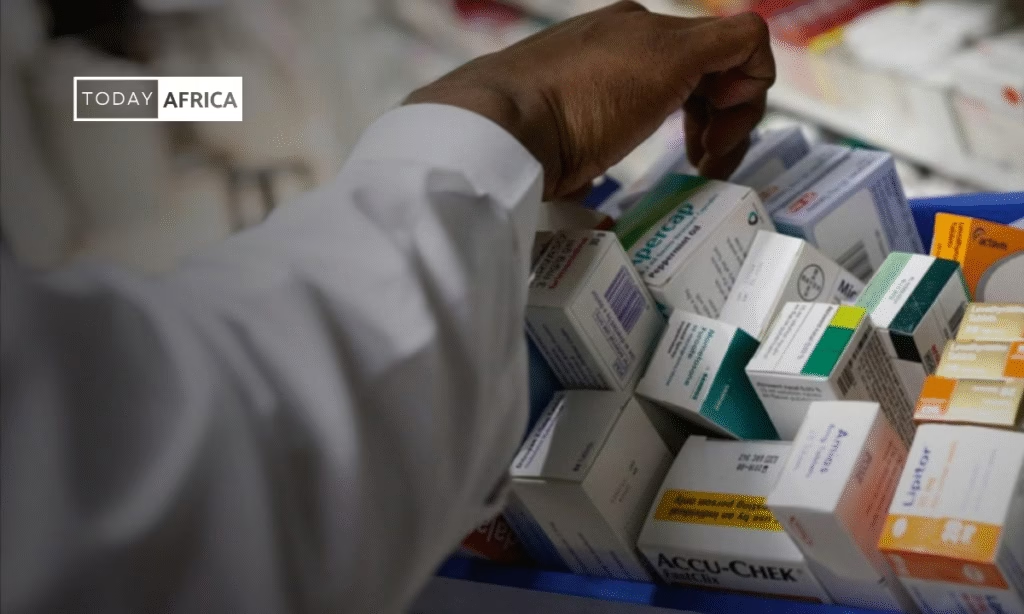
4. Leadership and organizational challenges
After more than a decade of founder-led growth, in late 2025, Gregory Rockson stepped down as CEO and handed the reins to his former COO, Kwesi Arhin. The transition, a first non-founder CEO, raised questions about mPharma’s strategic continuity and investor confidence.
However, the appointment (and an immediate capital injection from BII’s Ghana fund) indicated a move toward more structured, continent‑wide scaling. Still, managing cross-border operations with 250+ employees and hundreds of partner stores is complex.
Ensuring consistent training, governance, and culture across Ghana, Nigeria, Kenya, Uganda and beyond is a heavy burden. mPharma has built relationships with global figures like Helena Foulkes (former CVS president) and Daniel Vasella (ex-Novartis chief) on its board, partly to help navigate these challenges.
5. Skepticism and pushback
Some local pharmacy associations worried that the franchise model threatened their independence. As Rockson admitted in interviews, many owners were “conservative” and hesitant to be first movers.
mPharma had to demonstrate ROI, often by purchasing existing chains outright (Haltons, HealthPlus) to create showpiece stores. Even for investors, the model prompted caution; it took years of performance before DFIs like CDC and BII became involved.
Cultural factors also played a role: in some markets consumers initially distrusted generic medicines, forcing mPharma to emphasize quality.
6. Balance visionary ambition with hard constraints
It repeatedly ran into Africa’s infrastructure limits, low insurance coverage (often under 10% even in middle-income countries), unreliable power and internet in clinics, and endemic corruption risks.
Its success so far owes much to agility and local adaptation.
For example, mPharma now works with insurance pilots in some counties and partners with microfinance lenders to help patients prepay for care. It also leans on development investors who understand the long game. Nevertheless, the challenges remain significant.
The company’s history of expansions and subsequent retrenchments (like the 2023 layoffs) shows how African healthtech can be unforgiving: high social demand but limited ability to monetize.
Every new country or service adds red tape, requiring patient, iterative progress.
Read Also: Inside PiggyVest’s Journey: How an Idea Changed How Nigerians Save
Mistakes, consequences, and lessons learned
mPharma’s story offers lessons, some learned the hard way, about scaling healthcare in emerging markets.
Over-expansion in its earliest years
After the 2017 Series A, mPharma aggressively added new countries and product lines simultaneously. By 2022 it was running pharmacies and programs in nine countries across four language zones.
While such reach proved the model’s potential, it also strained resources. The 2023 restructuring, including laying off 150 staff, suggests that building sprawling retail operations quickly can lead to inefficiencies.
In retrospect, mPharma’s pivot to a careful “regional champion” strategy in 2025 reflects this lesson: focus deeply on a few core markets before widening the net.
Integration challenges from acquisitions
Buying a pharmacy chain like Haltons or HealthPlus means inheriting legacy issues, staff, culture, and inventory backlogs that are hard to fix with a single software rollout. mPharma found that it had to invest heavily in retraining and renovating acquired stores.
Such integration costs (often invisible on balance sheets) eat into short-term profitability. The lesson is clear: acquisition can give scale but comes with debt – not just financial, but managerial.
Monetization
In healthcare markets dependent on cash payers, finding revenue beyond just drug sales is tough. mPharma’s answer was loyalty programs, co-pay subscriptions and teleconsult fees. But uptake of these services has been gradual.
For instance, the Mutti membership plans initially enrolled only a small fraction of chronic patients.
The company realized it needed more than just patient subscriptions; it also developed white-label contracts (like providing e-pharmacy technology to insurers and governments) to diversify income.
This underscores a lesson: don’t rely solely on patient out-of-pocket in low-income settings, seek partnerships with payers or employers.
Culturally, mPharma learned that technology adoption must be paced to local readiness.
Early on, the company underestimated how much training community pharmacists and nurses would need to use diagnostic kits and software.
They also found that marketing telehealth directly to rural patients was ineffective; instead, they now rely on word-of-mouth and local influencers. This highlights that “tech push” must often become “demand pull” in unfamiliar markets.
Investor perception was also shaped by such missteps. The rapid expansion helped mPharma raise big rounds, but the later pauses and restructuring raised eyebrows.
That may be why its recent funding came from patient-oriented DFIs (CDC/BII) rather than high-return venture capital.
The good news is that mPharma’s core business, linking pharmacies and reducing costs, has proven resilient enough to attract further investment, even as newer VC enthusiasm in African health has cooled.
Its journey has signaled to other entrepreneurs that healthcare models must balance impact with sustainable unit economics.
mPharma’s experience offers broader lessons
- First, public-private collaboration is crucial. When mPharma has co-designed projects with governments (e.g. Ghana’s e-pharmacy law, national insurance pilots, or the Gabon contract), rollout was smoother. Regulatory clarity, a protection for investors and patients alike, accelerates adoption.
- Second, unit economics matter: even with a noble mission, mPharma had to focus on margins. It learned to slow growth when discounts approached unsustainable levels. This teaches African health innovators to seek early breakeven and diversify revenue (for example, by selling inventory management software to hospitals).
- Third, building trust is key: pharmacies and patients needed to see tangible benefits. mPharma’s strategy of buying and upgrading local chains provided visible proof, which helped recruit more franchisees.
On a systemic level, mPharma’s impact has inspired a growing ecosystem. Its success has helped persuade some global pharma companies and investors that African distribution can be a viable business.
The “buy‑now‑pay‑later” model for medicines, pioneered by mPharma, is now being explored by fintech startups. Competitors and partners alike are beginning to digitize pharmacy records and pricing, partly following mPharma’s lead.
Importantly, mPharma’s story, that strong local traction must come before continent‑wide scaling, has become a case study: investors now often look for that kind of proven model before funding expansion.
Conclusion
Over the past decade, mPharma has evolved from a small Ghanaian tech startup into a pan-African health‑tech infrastructure player.
Looking forward, the company’s future depends on balancing scale with sustainability. Its expansion into Francophone West Africa will test whether the model truly adapts to new languages, currencies and regulations.
If successful, the Benin–Togo pilot could become a blueprint for other markets. If it stumbles, it may reinforce the lesson that African healthtech needs long-term patient capital and deep local partners.
In any event, mPharma’s story already offers a blueprint for health innovation on the continent: start with a real, local problem, prove the model in one tough market, then expand carefully.
The company’s blend of tech savvy, entrepreneurism and social mission has reshaped expectations for pharmacies in Africa. As its co-founder Gregory Rockson says, mPharma is “building an Africa that is in good health” by reimagining how care is delivered.
Its journey shows both the promise and the pragmatism needed to transform African healthcare – a lesson that will influence startups, investors and policymakers for years to come.
Sources: Forbes, Quartz, TechCrunch, Managing Ghana, Business Insider, Realistic Optimist and mPharma’s own publications.
Leave a comment and follow us on social media for more tips:
- Facebook: Today Africa
- Instagram: Today Africa
- Twitter: Today Africa
- LinkedIn: Today Africa
- YouTube: Today Africa Studio

